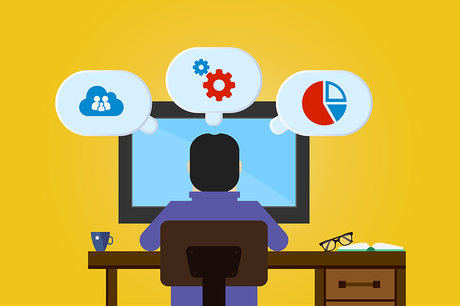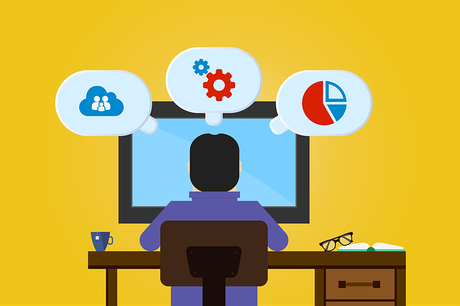In the ever-evolving landscape of Human Resource Management (HRM) software development, staying abreast of the latest trends, technologies and methodologies is crucial for businesses seeking to streamline their HR processes and improve overall efficiency. This article aims to decode the complexities of HRM software development landscapes, providing an in-depth analysis of key components such as vendor offerings, integration capabilities, customization options, and scalability. By gaining a deeper understanding of these key factors, businesses can make informed decisions when selecting HRM software solutions that best align with their organizational needs and long-term goals.
Table of Contents
- 1. Introduction to HRM Software Development Landscapes
- 2. Key Components of HRM Software Development
- 3. Understanding HRM Software Architecture
- 4. Integration of HRM Software with Other Systems
- 5. Best Practices for HRM Software Development
- 6. Emerging Trends in HRM Software Development
- Q&A
1. Introduction to HRM Software Development Landscapes
In the field of Human Resource Management (HRM) software development, there exists a vast and complex landscape of technologies, tools, and methodologies that contribute to the creation of innovative HR solutions. Understanding this landscape is essential for HRM software developers to stay competitive in the rapidly evolving market.
Key components of HRM software development landscapes include:
- Integration of HRM systems with other business applications
- Adoption of cloud-based solutions
- Utilization of artificial intelligence and machine learning for automation
- Compliance with data security and privacy regulations

2. Key Components of HRM Software Development
HRM software development involves various key components that are essential in creating a robust and efficient system. These components work together to ensure that the software meets the needs of the organization and its workforce. Some of the include:
- Database Management: A well-designed database is crucial for storing and managing employee data, including personal information, work history, performance evaluations, and more. Effective database management ensures data integrity, security, and easy access for authorized users.
- User Interface: A user-friendly interface is essential for HRM software to be easily navigable and intuitive for end users. The interface should be clean, organized, and customizable to meet the specific needs of different users within the organization.
- Integration Capabilities: HRM software should be able to seamlessly integrate with other systems and applications used within the organization, such as payroll, attendance tracking, and performance management tools. This ensures data consistency and efficiency in operations.
3. Understanding HRM Software Architecture
HRM software architecture consists of various components that work together to manage human resource functions efficiently. Understanding the architecture of HRM software is essential for optimizing its performance and customizing it to suit the specific needs of an organization.
The key components of HRM software architecture include:
- Database Management System (DBMS): HRM software relies on a robust DBMS to store and retrieve employee information, performance data, payroll details, etc.
- Application Layer: This layer contains the business logic and rules that govern the HR processes, such as recruitment, training, and performance management.
- User Interface: The user interface is the frontend of the HRM software that allows users to interact with the system and perform various functions.
- Integration Layer: This layer enables seamless integration with other systems, such as accounting software, to ensure data consistency and accuracy.
4. Integration of HRM Software with Other Systems
One of the key features of modern HRM software is its ability to seamlessly integrate with other systems within an organization. This includes systems such as payroll, time and attendance tracking, and performance management tools. By integrating HRM software with these systems, organizations are able to streamline their processes, save time, and improve efficiency.
**Benefits of integrating HRM software with other systems:**
- Improved data accuracy
- Greater efficiency in managing HR processes
- Enhanced reporting capabilities
- Increased productivity for HR staff
- Real-time access to critical information
5. Best Practices for HRM Software Development
When developing HRM software, it is essential to adhere to best practices in order to ensure the efficiency and effectiveness of the system. One key aspect is to prioritize user experience and interface design. The software should be user-friendly, intuitive, and easy to navigate for HR professionals and employees alike. This can be achieved through conducting thorough research, gathering user feedback, and iterative testing to refine the interface.
Additionally, it is crucial to focus on data security and privacy measures when developing HRM software. Implementing robust encryption protocols, secure login processes, and data access controls will help safeguard sensitive employee information. Regular security audits and updates should be conducted to identify and address any vulnerabilities in the system. Compliance with relevant data protection laws and regulations, such as GDPR and HIPAA, should also be a top priority in HRM software development.
6. Emerging Trends in HRM Software Development
In the fast-paced world of HRM software development, it is crucial for professionals to stay up-to-date with the latest emerging trends. Here are some key developments that are shaping the future of HRM software:
- Integration with AI and Machine Learning: HRM software systems are increasingly leveraging artificial intelligence and machine learning algorithms to automate routine tasks, such as resume screening and candidate matching. This not only improves efficiency but also helps HR professionals make more data-driven decisions.
- Focus on Employee Experience: Modern HRM software is placing a greater emphasis on enhancing the employee experience. Features like personalized dashboards, self-service portals, and real-time feedback mechanisms are becoming more common, allowing organizations to create a more engaging and satisfying work environment.
Q&A
Q: What is HRM software development and why is it important?
A: Human resource management (HRM) software development refers to the process of creating software solutions that streamline and automate tasks related to managing employees within an organization. It is important because it helps businesses effectively manage their workforce, improve productivity, and ensure compliance with HR regulations.
Q: What are the key components of HRM software development landscapes?
A: Key components include employee database management, payroll processing, benefits administration, performance management, recruitment and onboarding, training and development, and compliance tracking.
Q: How does HRM software development benefit businesses?
A: HRM software development benefits businesses by improving efficiency, reducing manual errors, enhancing employee experience, and providing valuable data insights for decision-making.
Q: What are some common challenges faced in HRM software development?
A: Common challenges include integrating legacy systems, ensuring data security and compliance, addressing customization needs, and keeping up with evolving technology trends.
Q: How can businesses choose the right HRM software development solution for their needs?
A: Businesses can choose the right HRM software development solution by clearly defining their requirements, conducting thorough research, evaluating vendors based on their track record and customer reviews, and conducting pilot tests before full implementation.
In conclusion, understanding the ever-evolving landscape of HRM software development is crucial for organizations looking to optimize their human resources operations. By decoding the complexities of this field, businesses can better align their technology investments with their strategic goals and gain a competitive edge in the industry. With the right partnerships and a clear roadmap, HRM software development can drive efficiency, effectiveness, and innovation in the HR function. Stay tuned for more insights and updates on this dynamic field. Thank you for reading.
The post Decoding HRM Software Development Landscapes first appeared on dallaswebsite.design.
